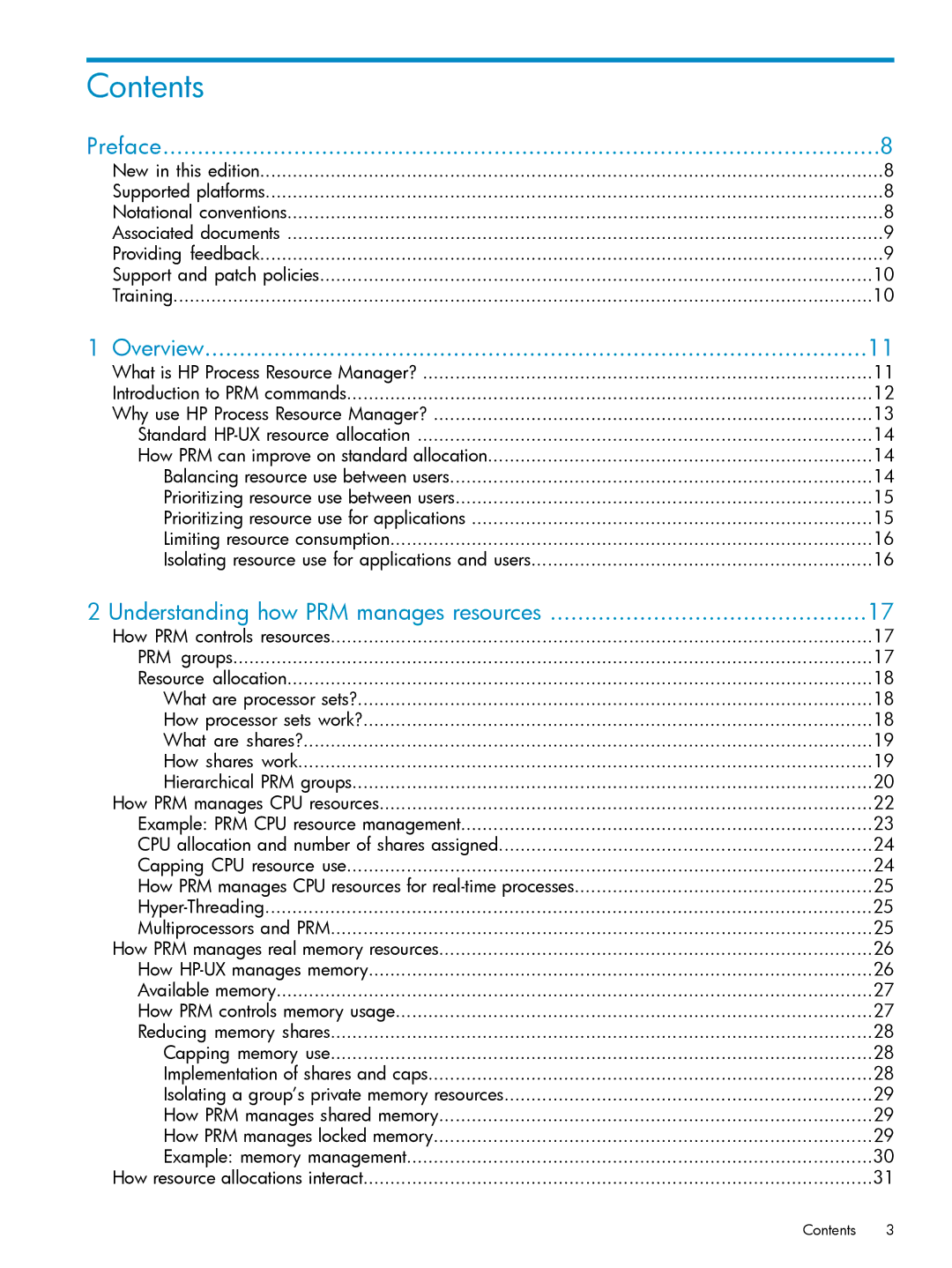Contents |
|
Preface | 8 |
New in this edition | 8 |
Supported platforms | 8 |
Notational conventions | 8 |
Associated documents | 9 |
Providing feedback | 9 |
Support and patch policies | 10 |
Training | 10 |
1 Overview | 11 |
What is HP Process Resource Manager? | 11 |
Introduction to PRM commands | 12 |
Why use HP Process Resource Manager? | 13 |
Standard | 14 |
How PRM can improve on standard allocation | 14 |
Balancing resource use between users | 14 |
Prioritizing resource use between users | 15 |
Prioritizing resource use for applications | 15 |
Limiting resource consumption | 16 |
Isolating resource use for applications and users | 16 |
2 Understanding how PRM manages resources | 17 |
How PRM controls resources | 17 |
PRM groups | 17 |
Resource allocation | 18 |
What are processor sets? | 18 |
How processor sets work? | 18 |
What are shares? | 19 |
How shares work | 19 |
Hierarchical PRM groups | 20 |
How PRM manages CPU resources | 22 |
Example: PRM CPU resource management | 23 |
CPU allocation and number of shares assigned | 24 |
Capping CPU resource use | 24 |
How PRM manages CPU resources for | 25 |
25 | |
Multiprocessors and PRM | 25 |
How PRM manages real memory resources | 26 |
How | 26 |
Available memory | 27 |
How PRM controls memory usage | 27 |
Reducing memory shares | 28 |
Capping memory use | 28 |
Implementation of shares and caps | 28 |
Isolating a group’s private memory resources | 29 |
How PRM manages shared memory | 29 |
How PRM manages locked memory | 29 |
Example: memory management | 30 |
How resource allocations interact | 31 |
Contents 3
